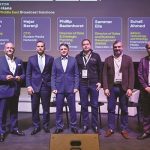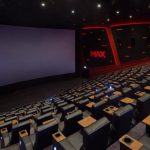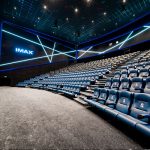Salem Humaid Al Marri, at the helm of some of the UAEs satellite projects from conception, recently assumed the mantle of Director General at Mohammed bin Rashid Space Centre. In conversation with Vijaya Cherian, he gives us a flavour of whats cooking in the MBRSC lab these days and his vision for the organisation.
 How did you come to be involved in space projects in the first place?
How did you come to be involved in space projects in the first place?
I was working as a telecommunications engineer and there was an opportunity to join in a project to develop a satellite for Dubai government, and that excited me. So I applied and was one of the first engineers to be selected. This was basically to join DubaiSat-1 and build that project. This was before the establishment of the centre (MBRSC). Back then, in 2005, it was called the Emirates Institute for Advanced Science and Technology (EIAST). We did the initial study and then there was a decree which led to the establishment of the Mohammed bin Rashid Space Centre. We started work on DubaiSat-1. What attracted me to this was that we were looking at knowledge transfer. It was a joint development and we were trying to develop these technologies in the UAE. As we went into 2006, I was the project manager for DubaiSat-1.
Where did you get your ideas from when you started with those projects?
We started by looking for established industry partners. We were very focused on the element of knowledge transfer, and we looked at countries that had taken a similar approach. South Korea was one of them. They did knowledge transfer with the UK. Then we looked at Surrey Space Technologies (STL) and some companies in Europe. They proposed projects they would build and where we would participate in the knowledge transfer programme, but we eventually chose South Korea because they learned from a knowledge transfer programme and then started building satellites on their own. So that means they had the capability to take this knowledge and use it efficiently.
What are your short-term and long-term goals as chief at MBRSC?
Short-term is to maintain a healthy flow of projects, as MBRSC is predominantly an engineering entity. Our focus is on engineering projects that are space-related, so a steady flow of engineering projects is one of my top priorities. Growing and developing existing projects while also initiating new and exciting projects is the way forward for us.
Long-term, we are looking at the UAE leaderships objectives. The exploration of the moon and Mars are part of that, and how we can potentially contribute on a more global level. We are on course with a number of unique engineering and scientific projects at MBRSC to fulfil those goals.
What projects are you cooking in the MBRSC kitchen right now, and what stages are they at?
We are cooking quite a few projects, but many of them are under wraps. But we are looking at our next Earth observation satellites, what types of satellites we want to build and what our next exploration missions are. As engineers, thats what excites us at MBRSC. We come up with initiatives, propose them to our board and then if they are approved at the government level, they are announced. So thats just to give you a flavour, though we cant divulge specifics.

Whats the progress on the Rashid Rover?
The Rashid Rover will be the first object from the UAE to land on the surface of another celestial body. Its the first time we have gone into robotics by building a robotic rover. It will land on the moon and do exploration there, and its fully developed in the UAE. This is why its significant for us. We plan hopefully to launch this at the end of this year.
We also have the MBZ satellite, which is the follow-on satellite to KhalifaSat. This is a very high-resolution imaging satellite, remote sensing, and is about 800kg. So its one of our largest ever satellites built, designed and developed in the UAE and manufactured with UAE manufacturers, such as Strata and others. Strata are airplane parts manufacturers in Al Ain; they are now developing mechanical structures for us. We plan to launch that at the end of next year.
We also have other pipelines that were working on, which is the training of our astronauts and looking at future human space flights for astronauts.
What major challenges is the space industry facing, and how do you hope to address them?
Space sustainability is a big one. The sustainable use of our orbit around Earth and how we can continue using that orbit safely is important. This is a big challenge for everybody today regionally and internationally. The other one is sustained investment in space, and thats a challenge for governments. Out here, we are continuously looking at doing our projects sustainably.
Is space debris a project you are looking to work on?
As an engineering facility, MBRSC is very focused on engineering projects. While we are not actively working on projects to remove space debris, we are careful to ensure our projects do not add to the space debris.
How many people currently work at MBRSC, and what percentage of those are women?
We have around 200 people and a little under 50% of them are women.
 What about the astronaut programme?
What about the astronaut programme?
We got close to 4,000 applications for the first phase and about 4,300 for the second phase. We selected four astronauts three men, one female. They are all currently training in the United States. Nora AlMatrooshi and Mohammad AlMulla are the two new candidates who have joined a batch with NASA astronauts and are training jointly with them. The other two are training on other elements related to ISS operations. Were currently working on finishing their training and then securing the next flights for our astronauts.
What are the criteria for selection?
We dont really discuss astronaut criteria with anybody, but we choose the most suitable astronaut theres obviously seniority, training readiness, capabilities, compatibility with the rest of the crew. There are many elements that come into choosing who is going to fly.
What is unique about the UAE space ecosystem?
The ecosystem here allows you to innovate. Sometimes we get to select projects that are exciting and unique. Sending a rover to the moon or sending humans to space excites us. Were proud and humbled that we are able to contribute to that whole process.
Are you able to share how much has been invested in these space projects?
Emirates Mars Mission was around $200m, and that is public information. At MBRSC, we try to develop innovative missions in a cost-effective manner. We dont have very huge budgets, but we have big minds that are able to achieve big objectives in a very cost-effective manner, because were able to develop these technologies on our own. We are not buying these technologies. We are not sourcing them from outside. We are developing them, which then inherently reduces some of our costs. The majority of our costs would be our staff. So this is how we are able to achieve big objectives in a cost-effective manner with very efficient budget utilisation.
Could you tell us a bit about your new payload initiative?
Yes, its called PHI Payload Hosting Initiative. It is a 12U satellite. We intend to launch one every year. This satellite has multiple purposes. One is to test new payloads, so we provide space for startup companies in the UAE and entities that want to launch a payload into space but dont have the capability to do that or it is too costly for them. We then launch it for them. Weve worked with two startup companies here in the UAE to launch their payload next year. Weve also cooperated with the UN on this, so they provide access to space to developing space nations. Nations in Africa and Asia that dont have the capability to launch into space but have great ideas will be considered for this. Students sometimes have great ideas; in that case, they build the payloads and we can launch them into space. We will integrate them into our satellite and launch them. This will happen at the end of this year or the beginning of next year. This is in cooperation with the UN.














































































